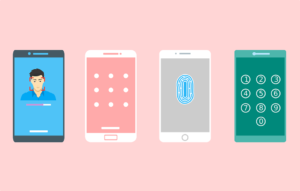Pop-quiz: What’s better than developing a creative, intuitive, and user-friendly mobile app? Answer: Developing a creative, intuitive, user-friendly, and SECURE mobile app. With so many bells and whistles at your disposal these days, it’s easy to center your app development efforts on innovation and flash. However, with widespread threats, hacks, and data breaches on the rise, it’s necessary to prioritize mobile app security.

From business and shopping, to home automation and games galore, mobile apps store and transmit an abundance of critical user information. Regardless of what industry or population your mobile app serves, a single data breach will cost you – literally. According to IBM’s acclaimed Cost of a Data Breach Study, the average cost of a breach in the United States is now over $7 million. That’s a lot of zeros. Cybercriminals not only steal dollars and cents, but they can rob you of something no insurance policy can protect – user and client trust. Paranoid and afraid yet? Good. Let’s channel that fear into mobile app security. Here are five tried and true ways you can help safeguard your iOS and Android apps against cyber risk.
1. Write the Fort Knox of Code
The fire-proof walls of Fort Knox – the most secure vault in the world – are comprised of 4-foot-thick granite lined with steel and cement, making them impenetrable. Take the Fort Knox approach from the get-go as you start writing the code for your mobile app. Code vulnerabilities are by far the most common source of breaking and entering by attackers. Armed with only a public copy of your code, hackers will waste no time in trying to reverse-engineer it. Minifying, hardening, and obfuscating your code will help deter attackers from tampering with it. Ensure that your code is easy to update and that bugs can be quickly addressed and fixed. The bottom line – strong code should be the bedrock of your mobile app security plan.
2. Encryption Prescription
Encrypting all data is another key mobile app security practice. In other words, adopt a proven encryption method to scramble all plain text like an egg to the point where even if stolen, your data will be of no viable use to an attacker. No single unit of data should be overlooked. A common misstep, especially among corporate organizations, is that developers assume mobile app data communicated inside of a firewall is safe. Unfortunately, all data in motion is fair game for attackers unless successfully encrypted, and security certificates are validated.
3. Top-Shelf Authentication
Gone are the days when “12345,” “QWERTY,” or the popular but not-so-clever “Password,” make the cut as viable passwords. In fact, weak authentication accounts for some of the most notable and large-scale breaches worldwide. While your end users ultimately decide what passwords and personal identifiers to use, you and your development team do wield some control. With mobile app security in mind, you should not only encourage users to adopt strong passwords, but you can design your iOS and Android apps to only accept credentials that pass the smell test. What constitutes a strong password? Requiring alphanumeric passwords that must be periodically renewed is always a good way to minimize risk. If your app is especially sensitive in nature, you can also incorporate more sophisticated authentication tools like fingerprints.
4. Platforms and Frameworks: Do Your Homework
Whether your mobile app runs on an iOS, Android, or cross-platform framework, it’s imperative to know how security works for each device and operating system. Your development team should be privy to the risks associated with specific features such as GPS, mail, and camera. Assessing app-building technologies is another key component of mobile app security. For example, experts suggest you only use centrally-authorized APIs. Poorly coded and unauthorized APIs present major vulnerabilities and invite hackers to snag access privileges.
5. Testing: The Backbone of Mobile App Security
Mobile app testing – the gift that keeps on giving. If you feel like the job of securing your app is never finished, then you’re doing something right. With so many new threats and security solutions emerging on the daily, continuous updates and testing efforts are not only suggested, but required. Err on the side of caution and account for penetration testing in your project budget and timeline. As onerous as continuous testing may be, you can’t afford to take your foot off the gas in this current breach-heavy climate.
With so many attackers polluting the development ether, mobile app security is starting to dethrone both UI and UX as the main determinant of an app’s overall success. With user trust and your bottom line at stake, it’s time to prioritize security. Not sure how to best protect your killer ideas and apps? Expert help is always a phone call away.
 Jason Turnquist
Jason Turnquist 